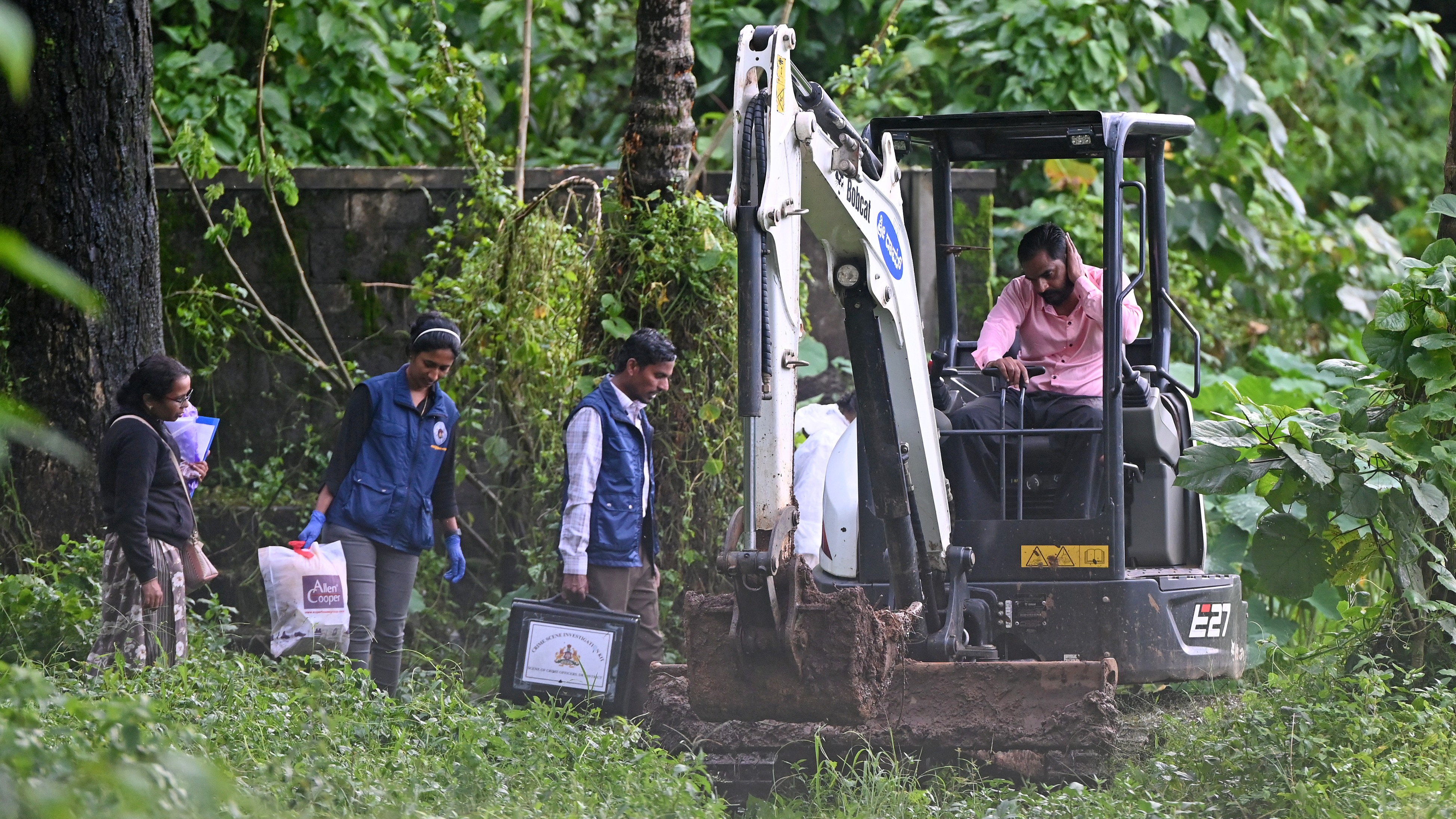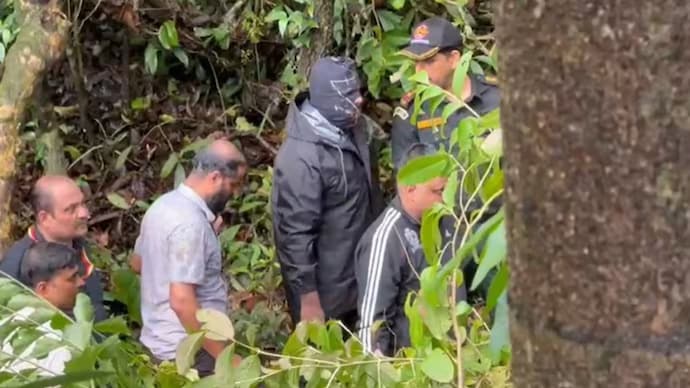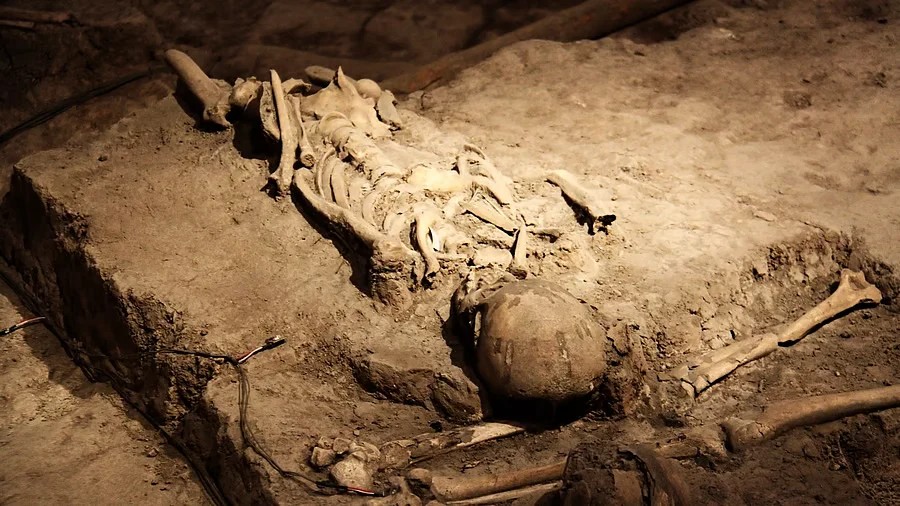The investigation into the alleged Dharmasthala mass burial case has taken a baffling turn as the Special Investigation Team (SIT) concluded the exhumation of the first site with no human remains discovered, despite digging as deep as eight feet. The chilling allegations date back decades, involving claims of hundreds of bodies clandestinely buried near the Netravathi River in the temple town of Dharmasthala, Karnataka. Yet, the physical evidence the SIT hoped to unearth at the initial buried sites remains elusive, deepening the mystery and raising haunting questions about the veracity of the claims, possible intimidation of witnesses, and challenges faced in forensic investigations.
The discovery that no human remains have been found even after digging eight feet deep at the first alleged burial site in the Dharmasthala mass burial case has intensified public scrutiny and questions surrounding the investigation’s direction. Many are perplexed by the absence of physical evidence given the gravity of the accusations, prompting speculation about potential errors in locating the exact spots or interference that could have compromised the sites before the probe’s commencement.
One critical factor complicating the exhumation is the passage of time. The alleged burials reportedly occurred over two decades ago, and natural processes such as soil erosion, flooding from the proximal Netravathi River, and microbial decomposition could have significantly disturbed or destroyed skeletal remains. Experts note that tropical climates accelerate organic decay, meaning even deep digging may fail to uncover trace remains, particularly if efforts were made historically to conceal evidence.
Environmental challenges within the dense forested terrain near Dharmasthala have also hindered the investigation. The sites identified lie in uneven hilly areas with thick undergrowth and rocky soil, making excavation laborious and slow. Forensic teams have had to balance the need for careful, detailed searches with logistical constraints like unstable ground conditions and the risk of causing irreversible damage to the surrounding ecosystem.
The allegations hinge on serious crimes including sexual violence and unlawful mass murder, which if proven, would implicate significant criminal liability and demand extensive judicial proceedings. Families of supposed victims and survivor advocacy groups have voiced their frustrations with the slow pace of progress and the seeming lack of tangible results so far, highlighting the psychological toll of uncertainty and the urgent need for answers.
Adding complexity is the sociopolitical atmosphere surrounding Dharmasthala’s revered temple and the local community. Some community members fear that the investigation threatens to disturb social harmony or damage longstanding reputations. There is talk of potential intimidation or reluctance among witnesses and locals to cooperate fully, which could obstruct efforts to corroborate testimonies or identify new leads.
The investigative agencies have emphasized transparency by filming and documenting all exhumation work to counter criticisms and build public trust. This approach aims to reassure victims’ families and the general public that the inquiry is earnest and genuine, despite setbacks. The authorities are also consulting with national and international forensic experts to apply best practices given the complex circumstances of the case.
Legal experts point out that even absent physical remains, the case could still proceed on the basis of circumstantial evidence, witness testimonies, and documentary proof. However, the prosecution’s ability to secure convictions will depend heavily on uncovering any corroborative forensic evidence that can definitively link the alleged crimes to specific individuals or groups.


Exhumation Under Intense Scrutiny, But No Traces Found
On July 29, 2025, police and forensic experts, assisted by the complainant—a former sanitation worker who alleged coercion to bury the bodies—began exhuming the first identified site. The team employed both manual and mechanical excavation extending nearly eight feet deep and over a 15-foot-wide area, yet no skeletal remains were found. The site yielded only a bag and an ID card, items currently undergoing detailed analysis but offering little definitive proof so far. Given groundwater seepage and natural soil displacement over years, experts acknowledge the difficulty of locating preserved human remains.
Allegations Trace Back More Than Two Decades
The case emerged from the whistleblower’s shocking confession that from 1995 to 2014, he was forced under death threats to dispose of bodies of individuals allegedly subjected to sexual violence and murder associated with the Dharmasthala temple premises. He identified 15 locations scattered through forest patches near the river where these mass burials purportedly occurred. The victims, spanning vulnerable groups including a young schoolgirl and acid attack survivors, reportedly showed signs of strangulation and sexual assault, intensifying the horror of the claims.
The investigation’s continuation into other alleged burial sites remains critical as the SIT seeks to uncover any evidence that corroborates the whistleblower’s claims. Each site presents unique challenges in terrain and soil composition, which may influence the likelihood of discovering remains. The team remains cautiously hopeful that with thorough and methodical excavation, physical proof will emerge to support the allegations and provide some closure to the decades-long mystery.
Public interest and media attention have surged around the Dharmasthala case, drawing national focus on issues of justice for victims and accountability. The heightened scrutiny has pressured authorities to ensure that their efforts are meticulous, transparent, and timely. At the same time, this spotlight has brought renewed calls for reform in how cases involving sexual violence and custodial abuse are handled in India, pointing to systemic flaws that enable impunity.
Experts emphasize that the Dharmasthala case embodies broader societal challenges surrounding marginalized populations and power dynamics. Allegations involve victims from vulnerable communities, raising questions about social neglect and possible institutional complicity. Healing and restitution efforts must therefore include not just criminal justice but also social welfare interventions to address the root causes of such atrocities.
As the SIT progresses with its investigation, questions linger about the offsetting forces that may have hindered earlier detection of these crimes. Whether through fear, intimidation, or administrative lapses, the silence that has surrounded the alleged mass burials spotlights the critical need for strengthening witness protection frameworks and community outreach initiatives to empower survivors and informants to come forward safely.
Community and Official Contradictions
While the complainant implicates unofficial, forested, and roadside burial grounds, the local Gram Panchayat has produced documents affirming that unclaimed bodies were buried solely in registered graveyards, challenging the allegations of clandestine mass graves. This divergence complicates the investigation, with authorities balancing documentary evidence against the whistleblower’s testimony. Local residents remain largely silent, an atmosphere possibly marked by fear and silence, impeding the gathering of corroborative testimonies.
Haunting Questions Persist—Power, Silence, and Justice
The absence of remains at the initial site raises disturbing questions: Are influential figures involved who have hindered uncovering truth? Has the passage of time erased physical traces irreversibly? Why have families or communities not filed missing person complaints corresponding to alleged burials? The veil of silence suggests possible threats or societal pressures discouraging witnesses from coming forward, emphasizing the grave social, legal, and ethical challenges in investigating such alleged historic atrocities.

Forensic and Legal Hurdles Ahead
Should remains eventually be discovered at other sites, forensic teams face the daunting task of identifying heavily decomposed or scattered skeletal material. DNA analysis on degraded samples after years of burial beside a river may be inconclusive or require extraordinary effort, complicating prosecution prospects. Legally, proving mass burial of victims tied to criminal acts from decades ago demands meticulous evidence chains, witness protection measures, and sensitive handling of community sentiments.
Ongoing Exhumation at Additional Sites
Following the inconclusive first excavation, the SIT has moved onto the second and third sites among the fifteen indicated by the complainant, continuing careful exhumations. Each site demands thorough forensic and archaeological scrutiny as authorities race against time and environmental conditions to locate any buried remains. The SIT is documenting every exhumation step on video to maintain transparency and strengthen the evidentiary record.
A Deepening Mystery and Urgent Need for Truth
The Dharmasthala mass burial case epitomizes the challenges in addressing long-buried allegations of grave human rights abuses—both literally and figuratively. As the SIT persists in its painstaking probe, the absence of immediate physical evidence has not diminished the case’s emotional and societal impact. The call for justice from victims’ families and communities echoes louder than ever, urging authorities to overcome obstacles, protect witnesses, and unravel the unsettling truths hidden beneath Dharmasthala’s tranquil landscape.
The investigation now stands at a critical crossroads. The ongoing exhumations, combined with intense forensic analysis and social inquiry, will determine whether the dark chapters of Dharmasthala’s past finally come to light. Meanwhile, the nation watches, grappling with the complexities of justice delayed and the haunting silence of the missing.
The role of technology in the investigation may become increasingly vital. Forensic archaeology using ground-penetrating radar (GPR), soil analysis, and DNA mapping offers promising avenues to detect disturbances in the earth consistent with grave sites or to recover minimal biological traces. Authorities are reportedly exploring these techniques to maximize chances of success in subsequent digs.
Meanwhile, social activists stress the importance of addressing the broader context of the case, including systemic failures that may have allowed such crimes to persist unreported for years. They call for institutional reforms, improved victim protection programs, and stronger laws against sexual violence to prevent recurrence of such tragedies.
Finally, the Dharmasthala mass burial case serves as a sobering reminder of the complexities inherent in investigating historic crimes deeply entwined with cultural sensitivities, environmental challenges, and time lapse. The path to justice here is fraught with obstacles, but the persistent efforts of investigators, combined with public demand for truth and accountability, offer hope that the dark shadows over Dharmasthala’s past may eventually be illuminated.
Follow: Karnataka Government
Also read: Home | Channel 6 Network – Latest News, Breaking Updates: Politics, Business, Tech & More

